August 3, 2023
Please stay tuned. I hope to be back later in 2023.
June 26, 2021
Walking Toward Peace: Veterans Healing on America’s Trails by Cindy Ross.
Mountaineers Books, 2021, 224 pages.
This is an important book that tells the intimate and heart-breaking stories of over two dozen veterans suffering from the unseen wounds of PTSD–also known as ‘shell shock’ or ‘battle fatigue.’ It describes their struggles in their own words–the horror they’ve experienced, their depths of despair, and the progress toward healing they have found on America’s hiking trails and in other places with natural surroundings.
Cindy is an excellent writer, as evidenced by her earlier books, and it is apparent here that she put a good deal of effort into learning about the results of ongoing scientific research into PTSD and the effects of extreme stress on the brain. Research has shown that major damage is done to the brain by the horrors of war– damage that is very difficult to reverse. Research has also shown that healing takes place when recreating in nature–and the more time in nature, the more healing. Immersion in the natural world–hiking, paddling, cycling, gardening, or just spending time sitting quietly on a log in the forest–actually re-wires the brain, making people, including those with PTSD, happier and more relaxed.
I had heard about the Wounded Warrior Project and about River House PA, but was very happy to learn that there are many, many more organizations out there whose purpose is to get veterans into the outdoors and to connect them with others, so that they feel part of a group again, replacing the intense camaraderie they had had with their comrades-in-arms that had been lacking after their return to civilian life. I encourage everyone to find out about these groups and support them if possible. A list can be found at the end of the book.
November 19, 2020
A couple of interesting Appalachian Trail memoirs
Walking With Rocks: An Englishwoman Loose in the Woods by Esther Parry. Independently published, 2019. 174 pages. https://www.amazon.com/Walking-Rocks-English-Woman-Loose/dp/B089TXGQBT/
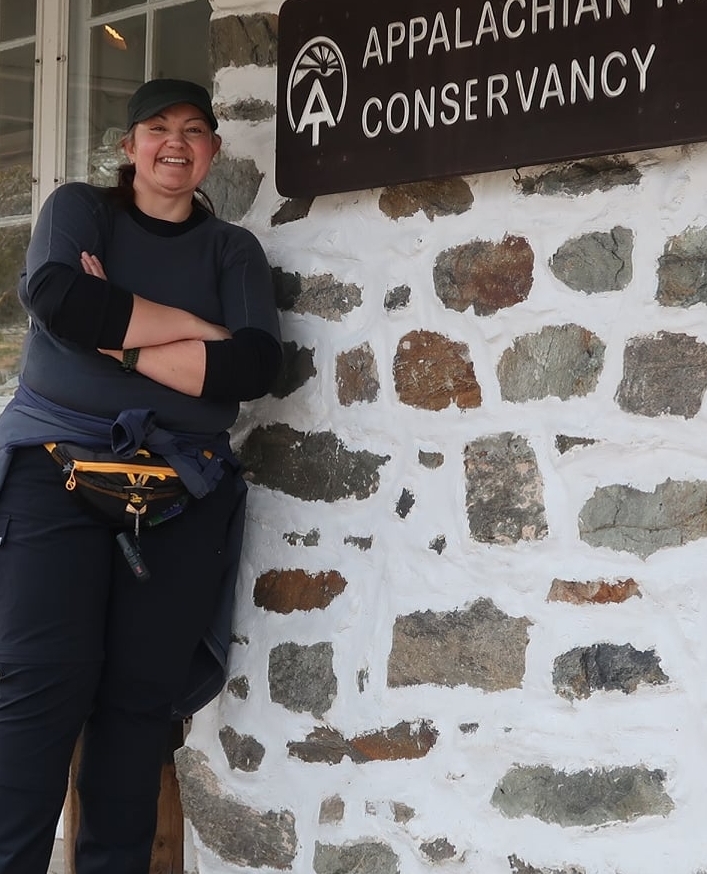

Esther Parry wanted to ‘do something crazy’ to celebrate her 50th birthday. In the preceding five years, she had ended her marriage, gotten a degree in Biological Anthropology, and worked at a wildlife conservation park. Now she wanted to test her mettle and find out who she truly was. So she decides that hiking the Appalachian Trail might fulfill that need and be that ‘something crazy’ she wants to do for her 50th. Her book is the story of this overweight middle-aged English mom and her attempted thru-hike. Her legs give out before she can complete the A.T., but she manages 450 miles plus 50 miles on the C&O towpath for a total of 500 miles–which had become her new goal. A beautifully-written book that’s well worth reading.
“Awesome account. Such honesty. First AT book I’ve read that talks about the serious technical difficulties in more than a cursory manner and talks about places that other hikers never mention. Wonderful sense of humor.”
–Amazon.com customer
“After finishing her undergraduate degree and the subsequent failure of her second marriage, she embarks upon a journey that turns out to be as much spiritual and emotional as it is physical. It’s a journey of discovery … mostly discovering that she really, REALLY, hates rocks. Very soon it becomes obvious that the trail’s description as “a bit rocky” is a ludicrous understatement. The relentless boulder fields become a pivotal feature of her journey and take her mental and physical endurance to its limit. The practicalities and dangers of trail life, and the challenging situations she encounters with complete naivety are both amusing and sobering, but it’s her faith and the amazing kindness, hospitality, and encouragement of complete strangers that carry her through. Honest and often funny, it will inspire you to find the courage to do “that thing” you never thought you could but always dreamt you might.”
— From book cover
Take the Path of Most Resistance by David Hiscoe. Walnut Creek, CA: Andrew Benzie Books, 2018. 279 pages. https://www.amazon.com/Take-Path-Most-Resistance-Appalachian/dp/1941713718

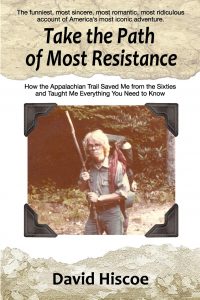
This is the story of David Hiscoe’s1973 thru-hike and how its lessons proved useful to his way of thinking in later life. “Since surviving the 1960s, David has been a carpenter, a professor, a communications leader for corporations and universities, a writer, and a collector of vintage guitars and ragged cats. He lives in Chapel Hill, NC, where he often naps and dreams that his grandchildren lived closer to home.”
“Emerging from a burgeoning pile of mediocre Appalachian Trail memoirs, Hiscoe’s remembrance of his 1973 Maine-to-Georgia trek is finally that “something different” readers long for. It contains soaring prose detailing the triumphs and ordeals of a young man reconciling his anger with the turbulent era in which he resides while thrilling to the literal ups and downs of trail life. It’s a book for serious hikers as well as a cross section of a man’s soul to be savored by anyone who craves great writing. Gritty, hilarious, poignant, and authentic. Don’t pass this up.”
—Richard Judy, author of Thru: An Appalachian Trail Love Story
“Wait! Before you get serious about starting off on your own next odyssey, read David Hiscoe’s coming-of-age quest as he searches for meaning in a world splintered senseless by the Vietnam War and racial inequality. David assuages his discontent by taking a long walk, sometimes painful, at times euphoric, in equal measure lonely, pointless, and hilarious, yet always (except in Pennsylvania!) awash in beauty. Hiscoe leads us into an Alice-in-Wonderland world where the pilgrim learns on the job that what might appear strange and contrary can be transformed into lessons to live by long after he emerges from the woods. An inspiring read for all walkers on the path to anywhere.”
—Laura Waterman, author of Losing the Garden: The Story of a Marriage
“Like many other young Americans, David Hiscoe responded to the bitter divisions of the Vietnam era by heeding the call to head on up to the country. But he wasn’t interested in a weekend of peace and love. Hiscoe joined what was then just a handful of people hiking the 2000 miles between Maine and Georgia on the Appalachian Trail.
Presented in perfectly paced vignettes, The Path of Most Resistance is Hiscoe’s account of his 1973 thru-hike. Some of his memories are funny, some are wistful and romantic, and some even unsettling. Taken together, they give us a vivid picture of what the iconic AT adventure was like back when the country was falling apart and hiking the trail was a most unusual thing to do. But The Path of Most Resistance is more than a simple wilderness tale from the Nixon-era. Through a long career in higher education and in corporate communica-tions, Hiscoe’s memories kept popping into his consciousness in office meetings and midway through PowerPoints. He uses these flashbacks to draw consistently illuminating and often hilarious parallels between what he saw in the woods and what he saw in the offices and classrooms of America.
As entertaining and enlightening as his stories are, what readers are most likely to remember is the singular impression Hiscoe gives of himself. Self-effacing but always observant and thoughtful, he comes across as part Whitman, part Thoreau, and part Gimpel the Fool. No one else has ever made a bad case of giardia in the backwoods so illuminating.
At the end of his trail, a child [asked] Hiscoe a question… “Hiking from Georgia to Maine…. Was it fun?” Ask the same question to anyone who reads this wonderful book. That person is bound to answer the same way Hiscoe did: “Yes, it was fun. Absolutely.” ”
—David G. Allen, Head of the English Department, The Citadel
November 17, 2020
My love of well-written books
After reading hundreds of trail books over the years, I’ve finally gotten to the point where I’m not willing to waste time on finishing a badly-written book. On the other hand, I’m thrilled when I find one of the few that are really well written. Those are books that deserve some publicity, so here are two of the good ones.
The Unlikely Thru-hiker: An Appalachian Trail Journey by Derick Lugo. Boston: Appalachian Mountain Club Books, 2019. 210 pages. https://www.dericklugo.com/product/book
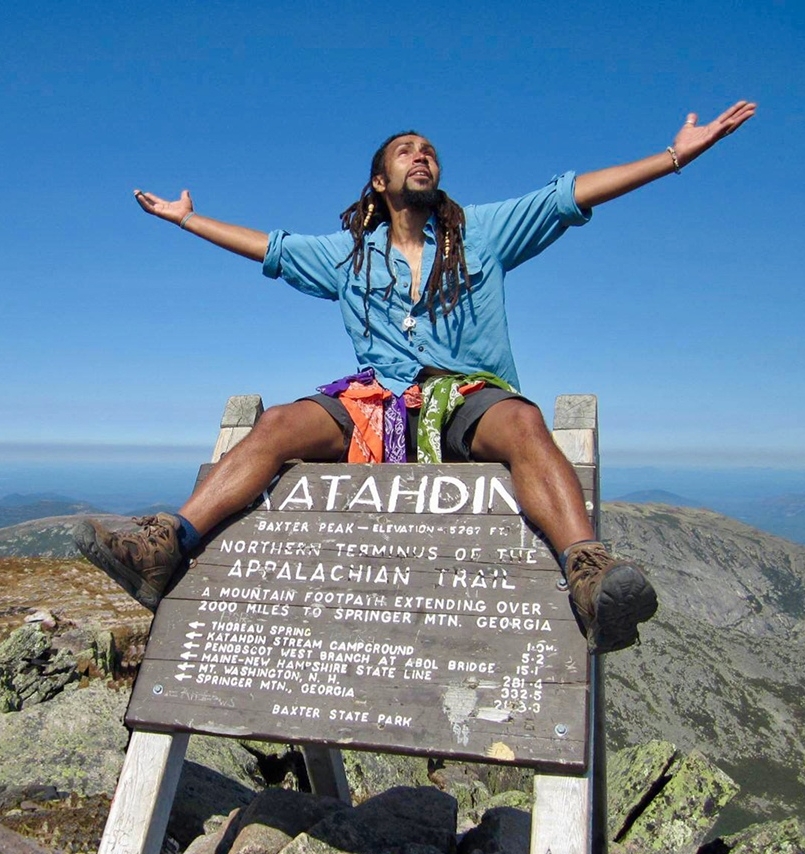
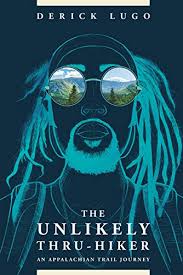
“The Unlikely Thru-Hiker is the story of a young black man setting off from [New York City] with an extremely overweight pack and a willfully can-do attitude. What follows are lessons on preparation, humility, race relations, and nature’s wild unpredictability. Through it all, Lugo refuses to let any challenge squash his inner Pollyanna, persevering with humor, tenacity, and an unshakeable commitment to grooming that sees him from Georgia to Maine.”
—https://amcstore.outdoors.org/products/the-unlikely-thru-hiker
“Derick Lugo’s description of his Appalachian Trail thru-hike is a highly readable, personal, humorous and insightful account of his nearly 2,200 mile journey from Georgia to Maine. His fellow hikers and companions are brought to life beautifully by the author’s candor and introspective commentary. It is one of the very best of the many A.T. thru-hike books.”
–Ron Tipton, former President/CEO of the Appalachian Trail Conservancy and a ’78 thru-hiker
“Forget what you know or think you know about hiking the Appalachian Trail and experience the hike through the fresh perspective of novice hiker Derick “Mr. Fabulous” Lugo, who provides us with a candid and clear-eyed account of a contemporary thru-hike. And worry not about the moniker “Mr. Fabulous”; Mr. Lugo tells his story with engaging humility. His respect for the trail and interactions with other hikers are exemplary.”
–David Miller, author of AWOL on the Appalachian Trail and The A.T. Guide
“Lugo–trail name Mr. Fabulous–is a smooth, self-deprecating narrator with a rare skill for fluid comic flourishes and a quirky, lyrical way of seeing and describing the world of the trail. Readers get a glimpse–often, not much more–of his fellow travelers. But Lugo beautifully portrays the surprisingly intense, accelerated intimacy of trail life, a stark contrast to his encounters with street denizens in his native city. Well-written, comical, insightful, and bursting with love, Derick Lugo’s debut memoir may not rank with the classics of trail literature. But it’s certainly one of the most artful and entertaining trail memoirs to come along in a good while.”
–Clay Bonnyman Evans
https://thetrek.co/book-review-unlikely-thru-hiker-dreadfully-delightful-memoir
Bliss(ters):How I Walked from Mexico to Canada One Summer by Gail M. Francis. [n.p.]: Francis, 2015. 228 pages. https://www.amazon.com/Bliss-ters-walked-Mexico-Canada/dp/0996605703
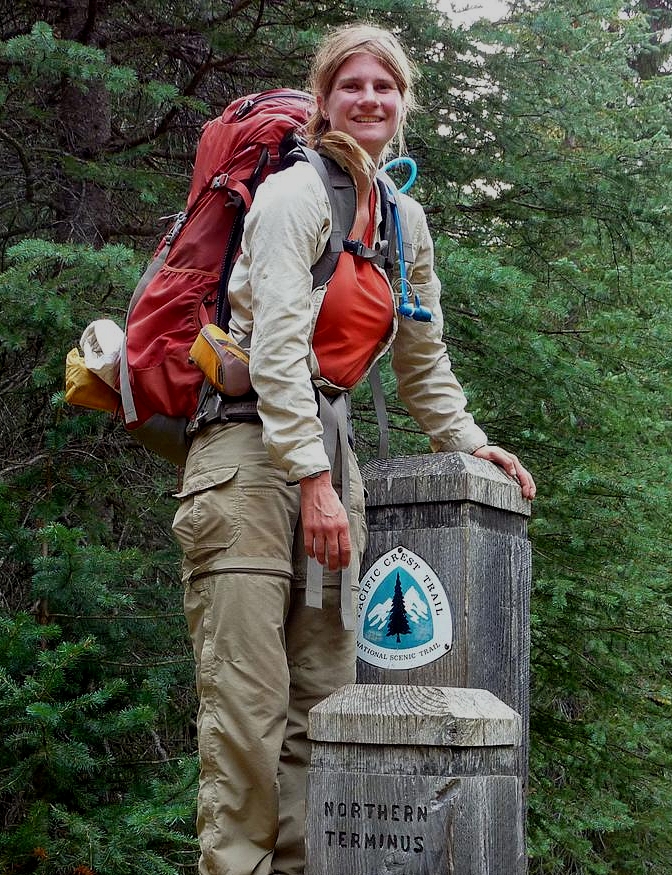

“Just before her 40th birthday, Gail Francis quit her perfectly good job and set out to hike one of the great trails of the world. Carrying everything she needed on her back, Francis spent five months walking from Mexico to Canada on the Pacific Crest Trail. Along the way, she lost her pack scrambling over scree in the desert, struggled to navigate high mountain passes, and wore the soles off her boots trekking across lava fields—all within some of the most pristine wilderness in the nation. Though she set out alone, her story includes an eclectic cast of characters. From the man walking the entire 2,700 miles in a series of twenty-six wedding dresses, to the woman making the journey in the company of her pet mouse, Francis learned to count on her fellow hikers for entertainment as well as a few important life lessons. Bliss(ters) offers readers a view of our country rarely seen: that of a person taking it one step at a time.”
—https://gailmfrancis.wixsite.com/author-blog
“Through her book I could feel the miles, the blisters, the dust and the wind. I could share the wonder and the beauty—but even more—I have met the fellow hikers and trail angels who make up the better nature of our species, and give us all reason to hope.”
–Michael Rafferty, co-author of Porcupine Mountains Companion
“The unpretentious telling of one woman’s journey through goal-setting, self-doubt, accomplishment and gratitude. This engaging book could inspire anyone to hike the trail, choose their own adventure, or simply believe in the goodness of humankind.”
–Emily M. Stone, naturalist and author of the Natural Connections newspaper column
October 2020
Especially for the armchair adventurer
This is a wonderfully-written book by Explorer Club member J. Robert Harris. Beginning at an early age, this New Yorker has been in love with adventure and now, with this book, we can travel along with him. A must-read, in my view.
Way Out There: Adventures of a Wilderness Trekker by J. Robert Harris. Seattle, Washington : Mountaineers Books, 2017. 254 pages. https://www.amazon.com/Way-Out-There-Adventures-Wilderness/dp/1680511203
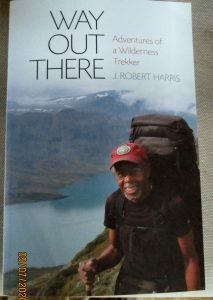
Here are a few of my favorite books…
October 2019
In my many years of collecting books for the Research Library (opened in May 2018) of the Appalachian Trail Museum, I’ve read just about every published book about the A.T. and I’m often asked about my favorite memoirs. So, for those who’ve asked:
Alexander, Lawrence. Through Hiker’s Eyes: A Journey Along the Appalachian Trail: Part One: Springer Mountain, Georgia to Harper’s Ferry, West Virginia. Jasper, Ala.: Trail Peddler Publishing, 2008
Alexander, Lawrence. Through Hiker’s Eyes: A Journey Along the Appalachian Trail: Part Two: Katahdin Bound. Jasper, Ala.: Trail Peddler Publishing, 2009.
Hughes, M. E. We’re Off to See the Wilderness, the Wonderful Wilderness of Awes: A Hiker’s 2000-Mile Adventure. Philadelphia, Pa: Xlibris, 2005.
Letcher, Elizabeth L., and Susan G. Letcher. The Adventures of the Barefoot Sisters: Book 1: Southbounders. [Warner, N.H.]: Flower Press, 2006.
Letcher, Elizabeth L., and Susan G. Letcher. The Adventures of the Barefoot Sisters: Book 2: Northbounders. [Warner, N.H.]: Flower Press, 2006.
Lowther, Mic. Walking North. 2nd ed. Seattle.: Elton-Wolf, 2001. [1st ed. Anchorage, Ala.: M. Lowther, 1990.]
McKinney, Rick. Dead Men Hike No Trails. Bangor, Maine: Booklocker.com, 2005.
Otis, Stephen and Colin Roberts. A Road More or Less Traveled: Madcap Adventures Along the Appalachian Trail. Knoxville, Tenn.: Sunnygold Books, 2008.
Ross, Cindy. A Woman’s Journey. Harpers Ferry, W. Va.: Appalachian Trail Conference, 1992. (Originally published – Charlotte, N.C. : Fast & McMillan, 1982.)
Rubin, Robert Alden. On The Beaten Path: An Appalachian Pilgrimage. New York: Lyons Press, 2000.
Sizer, Gary. Where’s the Next Shelter? [Place of publication not identified] : Published by author, 2015
Stutzman, Paul V. Hiking Through: Finding Peace and Freedom on the Appalachian Trail. Austin, Tex.: Synergy Books, 2010.
Wadness, Kenneth. Sojourn in the Wilderness: A Seven Month Journey on the Appalachian Trail. Prospect, Ky.: Harmony House Publishers, 1997.
And I have a couple of favorites in the ‘non-memoir’ category:
Luxenberg, Larry. Walking the Appalachian Trail. Mechanicsburg, Pa.: Stackpole Books, 1994.
King, Brian B. The Appalachian Trail: Celebrating America’s Hiking Trail. New York: Rizzoli, 2012
Ready…set…go read!
October 2015
Thru-Hiking Will Break Your Heart: An Adventure on the Pacific Crest Trail by Carrot Quinn. [Kenner La.]: [CreateSpace], © 2015. 369 pages. https://www.amazon.com/Thru-Hiking-Will-Break-Your-Heart/dp/1511740558
This is an excellent book–the writing is magnificent, and the tale is engrossing. Highly recommended.
“If you want to read about a self-sufficient young lady who had never done a thru-hike and communicates day-by-day her challenges, her excitement, her interaction with other hikers and non-hikers, her thoughts, feelings, and observations – if you want to taste the flavor of a thru-hike, then this book is for you. The book covers Quinn’s 2013 thru-hike of the Pacific Crest Trail. I first heard of her in 2014, when she decided to hike the trail again and posted her progress and daily thoughts on her blog almost every day. I followed her blog after reading several rave reviews, and was impressed with her posts, even though she was typing them on a smartphone. Hiking the PCT, is a full time endeavor, and it was impressive how she found the time to write quality posts day after day. I believe this is Quinn’s first book, and hopefully she continues to write. It is an excellent first effort and her writing skills should grow over time. It is a good read if you are a backpacker, a thru-hiker, or neither.”
From: http://popupbackpacker.com/thru-hiking-will-break-your-heart-the-book
“The writing is direct and elevated from the mundane. Carrot is a generous writer and as the book develops her emotions are bared candidly, which sometimes for the reader are quite painfully raw (this is a good thing!). But it’s not just a book about emotions; here is much about the trail itself, beautifully written descriptions of the areas she walks through and the people that she meets or walks with. She writes so well that there is very much a feeling of walking with her, without the thirst, hunger, illness – or the views, sadly! For anyone who has found out much about (or even walked) the PCT, they will be aware that this isn’t exactly a walk in the park. From desert/chaparral travel to walking at altitude to meeting something more like Scottish/Norwegian conditions, she describes it all and very vividly.”
From a review by H. Gauperaa on Amazon.com.
” I immediately fell in love with her writing style. It is open, raw, engaging, honest, and very much alive. As a writer, and one senses as a person, she is equal parts tough and vulnerable. It’s rare to find such straightforward writing that doesn’t seem to suffer from ‘Writer’s Workshop-itis’: overwrought descriptions looking for genuine emotion. Quinn’s writing is the real deal. If you’re looking for a PCT guide, this isn’t it. But if you want to come along for her ride, it’s as good as sitting on her shoulder with glimpses into her heart and mind for the length of the trail. “
From a review by Julie W. on Amazon.com.
Favorite memoirs.
September 2015
In my many years of collecting books for the future library of the Appalachian Trail Museum, I’ve read just about every published book about the A.T. and I’m often asked about my favorite memoirs. So, for those who’ve asked:
Alexander, Lawrence. Through Hiker’s Eyes: A Journey Along the Appalachian Trail: Part One: Springer Mountain, Georgia to Harper’s Ferry, West Virginia. Jasper, Ala.: Trail Peddler Publishing, 2008
Alexander, Lawrence. Through Hiker’s Eyes: A Journey Along the Appalachian Trail: Part Two: Katahdin Bound. Jasper, Ala.: Trail Peddler Publishing, 2009.
Hughes, M. E. We’re Off to See the Wilderness, the Wonderful Wilderness of Awes: A Hiker’s 2000-Mile Adventure. Philadelphia, Pa: Xlibris, 2005.
Letcher, Elizabeth L., and Susan G. Letcher. The Adventures of the Barefoot Sisters: Book 1: Southbounders. [Warner, N.H.]: Flower Press, 2006.
Letcher, Elizabeth L., and Susan G. Letcher. The Adventures of the Barefoot Sisters: Book 2: Northbounders. [Warner, N.H.]: Flower Press, 2006.
Lowther, Mic. Walking North. 2nd ed. Seattle.: Elton-Wolf, 2001. [1st ed. Anchorage, Ala.: M. Lowther, 1990.]
McKinney, Rick. Dead Men Hike No Trails. Bangor, Maine: Booklocker.com, 2005.
Otis, Stephen and Colin Roberts. A Road More or Less Traveled: Madcap Adventures Along the Appalachian Trail. Knoxville, Tenn.: Sunnygold Books, 2008.
Ross, Cindy. A Woman’s Journey. Harpers Ferry, W. Va.: Appalachian Trail Conference, 1992. (Originally published – Charlotte, N.C. : Fast & McMillan, 1982.)
Rubin, Robert Alden. On The Beaten Path: An Appalachian Pilgrimage. New York: Lyons Press, 2000.
Stutzman, Paul V. Hiking Through: Finding Peace and Freedom on the Appalachian Trail. Austin, Tex.: Synergy Books, 2010.
Wadness, Kenneth. Sojourn in the Wilderness: A Seven Month Journey on the Appalachian Trail. Prospect, Ky.: Harmony House Publishers, 1997.
And I have a couple of favorites in the ‘non-memoir’ category:
Luxenberg, Larry. Walking the Appalachian Trail. Mechanicsburg, Pa.: Stackpole Books, 1994.
King, Brian B. The Appalachian Trail: Celebrating America’s Hiking Trail. New York: Rizzoli, 2012
Ready…set…go read!
June 2014
THRU: An Appalachian Trail Love Story by Richard Judy. Gardners, Pa.: Appalachian Trail Museum, © 2014. 291 pages; Museum price: $20.04 (incl. shipping) paperback.
“When a diverse group (by age, background, and ethnicity) of northbound “thru-hikers” meet on Springer Mountain, they begin developing bonds that will unite them as they embark on a 2,184-mile odyssey toward Katahdin. The evolving dynamics of the group and couples will be familiar to many long-distance hikers.”
Richard Judy was one of the first 100 thru-hikers of the Trail; he thru-hiked the AT from north to south in 1973 at age 21. Since then, he’s climbed and canoed all over the U.S. and once bicycled from Los Angeles to Savannah Beach. His daughter, Laura, and son, Dan, are also SOBO thru-hikers. Richard recently retired from a long career in public relations. He has spent many years as an active volunteer for not-for-profit causes. He is currently the board president of Appalachian Education and Recreation Services which oversees the Len Foote Hike Inn, an educational backcountry lodge located just off the AT Approach Trail south of Springer Mtn. In 2014, Richard plans to finish a 15-year section hike of the AT, and he is a Life Member and a long-time supporter of the Appalachian Trail Conservancy.
He writes, “As I prepared for my Maine to Georgia thru hike in the Spring of 1973, I got to thinking that once I actually lit out on the adventure, I would take on a new persona requiring a fresh label. I decided to call myself Peregrine, because I was a great admirer of falcons, because I was embarking on a 2,000-mile peregrination, and because I had a self-inflated view of myself — typical for a 21 year old. I guess I was among the first of the thru hikers to tag myself with a trail name. Now, both my kids are thru hikers. My son Dan went by the name Optimus Prime during his 2000 SOBO hike, and my daughter Laura was known as Steady on her 2004 SOBO thru hike. Even now, more than three decades since I reached Springer, I still call myself Peregrine when I pass into the parallel universe of the sacred AT.”
When the author completed his thru-hike of the A.T., he dreamed of capturing the essence of this last great American adventure on paper. Now, in THRU: An Appalachian Trail Love Story, a decades-old vision comes to life as his characters in the “Bly Gap Gang” take on the elation, the blisters, the excruciating pain and the unimaginable thirst and hunger of a thru-hike. Ultimately, the novel explores the sheer existential conundrum of why anyone would spend months walking along ridge crests and examines the human side of the wilderness trek that millions ponder but few actually experience. THRU also contemplates the question asked by all thru-hikers: “What have I gotten myself into?”
Richard says, “THRU: An Appalachian Trail Love Story, combines the people and places I’ve encountered over more than a half-century of hiking on trails across America. It is an authentic slice of the grit and wackiness that embodies the crazy dream of walking unbathed and unshaved in mountains for months at a time. All this time on the trail has led me to share my memories to financially benefit the publisher, the Appalachian Trail Museum at Pine Grove Furnace State Park, Pennsylvania. Please read THRU and enjoy the antics of Captain Stupid, Momma Llama and their friends as they work their way NOBO to Katahdin.”
Larry Luxenberg, president of the A.T. Museum writes about the book, “its characters capture the modern-day essence of one of America’s last great adventures. It’s a great read, particularly for those who have wondered what it would be like to hike the entire trail.”
Instead of a first person ‘memoir,’ Richard tells the tale by alternating between the eight fictional hikers’ trail journal entries, providing eight very different perspectives of the same hike. It’s a tale that’s very well-written and totally engrossing. Though normally not a fan of fiction, I was immediately hooked in and swept away. I found myself staying up ‘til the wee hours of the morning because I couldn’t put the book down. I highly recommend it and commend Mr. Judy for donating all proceeds to the A.T. Museum!!
Here’s a link to the 1974 article he wrote about his hike: http://www.booksforhikers.com/wp-content/uploads/2007/06/Atlanta-Journal-Constitution-1974-article-on-Richard-Judy-thruhike2.pdf
December 2013
The Florida Trail Guide: A Hiker’s Guide to Travel Services along Florida’s National Scenic Trail by Sandra Friend & John Keatley. Sanford, Fla.: Watula Press, © 2013. 224 pages; $27.78 (incl. shipping) paperback.
About six years after the last guidebook for hiking the Florida National Scenic Trail (Florida Trail Companion Guide for Long Distance Hikers. 3rd ed., 2007) was published, there’s finally a new one. This one is very much “new and improved.” It’s modeled after David “AWOL” Miller’s guidebook for the Appalachian Trail (The A.T. Guide) and written by Florida’s most knowledgeable trail writers, so it’s an excellent guide. Here are some details from the website [http://www.floridahikes.com/the-florida-trail-guide]:
“The Florida Trail Guide provides logistics for hiking and backpacking the Florida Trail, whether you’re planning a weekend trip with friends, an outing with a Scout troop, a week in the woods, section hikes of significant length, or a full thru-hike of 1,100 miles across the state of Florida.
Building on a strong foundation of four Florida Trail guidebooks previously written by Sandra Friend, this book contains more services details in an easier-to-read format … inspired by The AT Guide. When we set off to thru-hike the Appalachian Trail last year, our constant use of ‘AWOL’ convinced us that the Florida Trail deserved a great resource, too. David Miller was kind enough to assist us in understanding the logic behind his layouts and provided us the service icons found throughout the text.
This 224-page book covers the full length of the Florida Trail, including both portions that are designated National Scenic Trail segments as well as connector trails like the Ocean-to-Lake Trail. The Eastern Continental Trail (ECT) connector from Key West to Big Cypress National Preserve is covered in its own chapter. Mileages, and the overall flow of the book, are based on a typical thru-hiker route from Big Cypress to Fort Pickens, with alternate routes fully detailed in the back of the book.”
The “Data Spreads” show trail mileages and maps and the “Services Spreads” show town information and maps. Samples of these spreads are on the website. The book has several introductory pages about hiking the Trail and things you should know about hiking in Florida, and information is included about getting to/from the Trail’s termini.
August 2013

Grizzly Bears and Razor Clams: Walking America’s Pacific Northwest Trail by Chris Townsend. Dingwall, Scotland: Sandstone Press, © 2012.
185 pages; $26.95 paperback.
Chris Townsend is a prolific outdoor writer and photographer with a passion for wilderness and mountains, and a penchant for long distance hikes. He is the author of seventeen books, most illustrated with his own photographs. Chris’s prose has the ability to take you right on the trail with him, and I’ve always enjoyed his books–such as Crossing Arizona, The Great Backpacking Adventure, and Walking the Yukon. I also own a copy of his The Backpacker’s Handbook–now in its 4th edition. How fortunate the Pacific Northwest Trail (one of our newest National Scenic Trails) is to have its first memoir written by this award-winning writer who, by the way, was also the first person to walk the length of the Canadian Rockies.
This book, the Scottish author’s latest, is the story of his 2010 walk along the 1200-mile PNT, from the Rocky Mountains to the Pacific Ocean. Eventually, the PNT will be a completely built-and-blazed trail, but right now there isn’t even an up-to-date guidebook and the trail is “an adventure requiring route-finding skills and the ability to deal with difficult terrain” as well as some scary road-walks. As Chris says, “Calling the PNT a trail is misleading as there isn’t actually a clear path for much of the way and there are very few signposts. In fact, much of the route is on abandoned logging roads and disused trails that are fading back into the wilderness. There are some difficult cross-country sections too, both above timberline on exposed rocky terrain and in dense vegetation in the forests, where bushwhacking is the apt term for desperate struggles through the undergrowth.” But that didn’t bother Chris, who had not done a long-distance hike in quite a while and was more than ready for another. He “liked the idea of an undeveloped route, much of it in remote and little-frequented wild places that [he’d] never visited before and loved the idea of again spending weeks in the mountains and forest, travelling on foot through the natural world.”
In addition to the engrossing text, the book contains over 100 color photographs, most of them full-page, as well as an overview map at the beginning and section maps with each chapter — both of which help the reader follow the journey and have a sense of ‘being there.’ There are also appendices with information on Chris’s food, equipment, and the statistics of the walk.
Definitely worth the reading. But be ready to find yourself wanting to go for a long hike.
November 2012
The Appalachian Trail: Celebrating America’s Hiking Trail by Brian King.
Rizzoli, © 2012 334 pages; $50 hardcover.
Purchase via link at: http://www.atctrailstore.org
If you read only one book about the A.T. and its history, this is the one to choose.
Brian King, the publisher and keeper-of-the-archives at ATC, is such an excellent writer that I feel unworthy of trying to write about his book. And I call this book his even though others were involved in the book’s creation and his name does not appear on the cover or title page [which pains me]. The text is his, and without it, this would be just another coffee table book with pretty pictures. However, what he has written about the history of the Appalachian Trail–with a myriad of details–makes this a book to read and treasure, even if you do keep it on your coffee table. You might expect a history book to be dull–just the thing to put you to sleep at night. On the contrary, this book may keep you up all night because you just can’t stop reading. Brian has brought 75 years of A.T. history to life in amazing detail, and–with his exceptional skill–made it exciting and readable. You’ll learn about the lives of historic A.T. figures, including some very interestingdetails you won’t find in any other book. Even if you’ve been involved with the A.T. for many years and think you know it all, I believe you’ll discover something new in Brian’s text.
There’s a good description of the book’s contents at the publisher’s website. If you can’t afford to buy the book from ATC (member price $45) and support a good cause, you can get it for a bit less at Amazon.com. Whatever price you pay, it’s a ‘priceless’ book!
Winner of the 2013 National Outdoor Book Awards, Design and Artistic Merit category.
********************
May 2010
The Road to Damascus…and Beyond: A Reawakening of the Spirit by Thruhiking the Appalachian Trail by George “Ole Smoky Lonesome” Sandul.
Xlibris, © 2009 298 pages; $19.99 softcover, $29.99 hardcover. Purchase via links at: http://www.georgesandul.com/
George writes, “One day at the book store…some backpacking books caught my eye… soon I was heading home with my choice selections and dove into the reading to find the subject much too fascinating.A wanderlust soon set in.”What followed is a scenario familiar to many of you:“Soon you are gazing into space, wondering…you are at the outfitters…you have purchased a backpacking tent.Then other books.More gear.And this gear is not of the sort that really could be used for anything except backpacking.Soon you are telling people what you are going to do.And before you know it, you have made commitments that will be hard to back out of…”
Note the word commitments.This is the principal theme of George’s book.As he says, “The Trail’s nature is such that accomplishing a thru-hike required one element more than any other–deep commitment…A person can prepare for hiking the Appalachian Trail [but] if there is no commitment then it is all for naught.”The book’s chapters contain clues to how his family heritage (he’s a full-blooded Ukrainian) and career (24 years as a US Geological Survey mapmaker) contributed to his strong sense of commitment, which got a final boost from purchasing equipment and telling people what he was going to do: “Why couldn’t I have just kept my mouth shut and not told people…I am doing the entire thing.Two-thousand-some miles…No, I had climbed way out on a limb, leaving myself just hanging there.”
Commitment is also a big factor in his marriage to his wife, Kris.The subtitle “a reawakening of the spirit” refers to a reawakening of the spirit of his marriage through his hike.Kris is a major figure throughout the book, and he timed his summiting of Katahdin to coincide with their fortieth anniversary.I got the feeling that this book was, in a way, a long love letter to her.
George had another commitment, and that was to honor the spirit of Earl Shaffer in his approach to hiking the trail.“Mr.Shaffer was the consummate purist, and if there is any similarity to what he did and what we do as thru-hikers, it seems like there should be some effort made to emulate…what he did–hike the entire length of the trail, fully loaded, heading the correct direction at all times.”
George’s thruhike took place in 2003 when he was 62. He chose the trail name ‘Ole Smoky Lonesome’ because of his age, the fact that he’d be hiking through the Great Smoky Mountains, and he’d be lonesome for his wife. It was also a bow to the grungy character ‘Smoky Lonesome’ in a favorite movie, “Fried Green Tomatoes.” He’s a rather desolate soul who wanders in and out of the film. As the hike progressed, and George lost 35 pounds, he felt he looked more and more like his namesake character. It’s a good thing George was so committed, because it took all he had to finish the hike. In a Chinese take-out meal, shortly before the start of his hike, there was a fortune cookie with the message, “Your path is arduous but will be amply rewarding.” George writes, “The word ‘arduous’ became the byword of the hike. Repeated over and over…How arduous this section of the Trail is. How very arduous this mountain is. How arduous this rainy day is. Arduous.A fun word to say.The epitome of understatement….”
A host of topics are discussed as George progresses up the trail in the book’s many chapters:mental preparation, physical training , the insecurity of being a neophyte, food (especially ice cream), pain, trail dangers, hiking technique, pack weight, food, walking sticks, trail angels and trail magic, quitting, food, flying tents and poop disasters (both chapters worth the price of the book), keeping a journal, showers, food, falling down, bears and other fauna, boots, food, AMC huts, a lost dog, food, an abandoned pack, southern and northern hospitality, Shaw’s, Katahdin…and did I mention food?There are a few pages at the end giving details of his equipment and its cost, lodging and camping places and their cost,and trail jargon.
This is a book worth savoring–an exceptional book with a lot to offer the reader.It’s a tough, introspective, informative, inspirational, and at times hilariously entertaining, resource for anyone planning a thru-hike, especially those of George’s age group.The accounts of his family life and his career add much to the content, and I found it a wonderful introduction to a very interesting person.
************
George and his wife, Kris (who is a nurse), have lived in 70 towns in 19 states and currently reside in Wausau, Wisconsin.They have 3 children.
The ‘Route 51’ radio show website at http://http://www.wpr.org/regions/wau/route51/index.cfm
has an October 22, 2009 interview with George [enter keyword “sandul” in the search box].
[This review first appeared in the Winter 2009-2010 issue of The Long Distance Hiker: The Newsletter of the Appalachian Long Distance Hikers Association.]
********************
March 2010
Through Hiker’s Eyes: A Journey Along the Appalachian Trail: Part One: Springer Mountain, Georgia to Harper’s Ferry, West Virginia [432 pages] / Part Two: Katahdin Bound [500 pages] by Lawrence “Baro” Alexander
Trail Peddler, © 2008, 2009 $35.00 (2-vol. set) softcover. Purchase at: http://www.trailpeddler.com/.
Did I hear you say that trail memoirs recounting every little detail of a hike, step by step, day after day, month after month, are the most dull and boring things ever written?Well, here’s a two volume day-by-day memoir of a 2006 thruhike that might make you change your mind. It’s the story of the most hilarious journey, with the quirkiest cast of characters, you’ll probably ever read. It’s Through Hiker’s Eyes by Lawrence (Baro) Alexander and it’s as far as you can get from dull and boring.
If you don’t believe me, here’s what others have said: “A laugh-out-loud great read!!!”…”a well written and comically entertaining story”…”Get ready for a great read!”…”I’ve been rolling on the floor laughing all over again!” Yes, this is a day-by-day trail journal, but it’s a fun read and way not dull and boring.I started reading it one evening and didn’t want to stop, even when it got to be the middle of the night and my eyes wouldn’t stay open.
The book’s back cover says, “What happens when an Alabama Boy Scout, a California hippie, a New England young gun, a Southern princess, and a blue-eyed all-American girl cross paths in the woods and embark on a five-month hike through fourteen States and a colorful patchwork of characters? Welcome to the Appalachian Trail community. [It] sets the backdrop for this hilarious, fast-paced adventure where danger, hijinks, and fellowship challenge the limits of expectation and redefine lives.”That’s a pretty accurate description of this very well-written book.
Among that ‘patchwork of characters’ you’ll find in Larry’s books are: Model T (who gave Larry his trail name) Baltimore Jack and Postcard. His hiking tribe included Jangles, Mouse, H-Bomb, Shasta, Chardonnay, Silverfoot, River Weasel, Donkey Love and more. You’ll also meet ‘Tummy’ (his alter-ego) and ‘Sorrow and Suffering’ (his Lekis). And then there are a few characters who have been given pseudonyms; have fun guessing who they really are.
If these two volumes leave you wanting more, take a look at TrailJournals.com for the author’s tales of hiking the Dingle Way and Hadrian’s Wall Path. ‘Baro’ and some of his A.T. buddies (along with ‘Tummy,’ ‘Sorrow’ and ‘Suffering’) plan to hike the PCT in 2011. He says he then plans to write about that little stroll. I can hardly wait.
************
Larry is co-founder and Program Director of ChallengePoint, Inc., a non-profit adventure-based organization, where he works with groups to develop and enhance leadership skills and team building through retreats and backpacking trips.He currently resides in Jasper, Alabama.
[This review first appeared in the Winter 2009-2010 issue of The Long Distance Hiker: The Newsletter of the Appalachian Long Distance Hikers Association.]
********************
November, 2009
Solemates: Lessons on Life, Love & Marriage from the Appalachian Trail by Randy “Windtalker” Motz & Georgia “Mom” Harris.
364 pages. CreateSpace © 2008 $18.95 softcover. Purchase at http://www.rmghadventures.com/.
Imagine you’re considering thruhiking a long trail with a spouse or friend. Now imagine, really hard, the extreme physical and emotional struggles of such a hike and how easily they could tear your marriage or friendship apart. How do spouses or friends succeed not only in hiking from one endpoint to the other, but in holding together–and even improving–their relationship? How do they deal with the struggles and come out even stronger at the end? Well, you’re in luck…here’s a book that lets you in on the secrets to success.
Randy Motz is a sound engineer and composer of music for Native American flute. His wife, Georgia, works in metrology with the National Institute of Standards and Technology. In 2006, this couple—both in their fifties and married 14 years with 4 children between them–took six months off to thru-hike the Appalachian Trail together.
Solemates, is not one of the typical chronological hiking journals. They do describe many days of their hike, but not necessarily in order. The descriptions, worked into anecdotes about people, places and events throughout their hike, illustrate how the hike enriched their relationship. The authors also include many quotes from, and anecdotes about, other couple and solo hikers on ways they dealt with life on the trail.
Solemates describes the difficult art of give-and-take and it explores ways to overcome personal weaknesses and capitalize on each other’s strengths in order to succeed on a hiking adventure together. For Randy and Georgia, the reality was that their adventure “offered no place to hide, either physically or emotionally, and therefore required that every moment be faced head-on at that moment and be dealt with….the most overriding factor in making sure our differences were resolved by day’s-end was that we were going to be sleeping shoulder-to-shoulder in a tiny tent–and there was no sofa anywhere in sight.” They felt that their six-month adventure had a more enduring impact on them than anything else they ever experienced; and the result was, they “progressed from being ‘solemates’–two people hiking together to achieve a life goal–to becoming ‘soulmates’.” Their book offers a great many ideas and examples for other couples wishing for the same result.
Solemates includes a list of Trail terms, their gear list, a food list and information about Leave No Trace and Hiking in Harmony.
[This review first appeared in the Fall 2009 issue of The Long Distance Hiker: The Newsletter of the Appalachian Long Distance Hikers Association.]
********************
September, 2009

Walker, Bill. Skywalker: Close Encounters on the Appalachian Trail. Macon, Ga.: Indigo, 2008. 224 pages $19.95 hardcover Purchase at: https://www.atctrailstore.org/
In 1998, Bill Walker read Bill Bryson’s “A Walk in the Woods” and was immediately inspired to attempt a thru-hike of the Appalachian Trail. After all, he already loved to walk—-he walked to work and walked to explore cities in which he lived. So why not walk the Appalachian Trail? Ignore the fact that he had never slept even one night in the woods.
The thru-hike idea stayed with him, and he finally decided that 2005 would be his year to hike. When he mentioned this to his family, his father was incredulous and his mother said, “Why set yourself up for failure?” Then, just before his April departure date, he went on a practice hike with a group led by Warren Doyle. It was pretty much a disaster for Bill. Warren told him, “you don’t appear to be ready” and suggested he just do a section hike. With all these discouraging comments, and with all the bad advice he received from ‘helpful’ experts at various outfitters, it’s a wonder he completed his thru-hike. And it’s a wonder this book was ever born.
But Bill possessed one very important quality that made all the difference—- determination. How else would one describe him, in addition to being determined? Some attributes become apparent while reading the book: very tall(almost seven feet—-thus his trailname), possessed of a strong sense of humor, quite afraid of bears and quite partial to people. In fact, this book is such a delight to read precisely because of his fondness for people, his observation of their character, and his talent for capturing it all in words. He describes favorite hiking companions such as Justin, Whitewater and Nurse Ratchet, English Bob and the Troll family. But he also writes about such colorful characters as dominatrix Drama, lewd and obnoxious Tanya, annoying Air Puppy and a group of nine male hikers in their twenties know as The Sleazebags. How many of the trailnames in the book are real and how many are pseudonyms may only be known to Skywalker, but some pseudonyms are really obvious and you’ll have fun finding them as you read.
In addition to the ‘people stuff’ and the story of his hike, Bill inserts a bit of ‘trail stuff’ here and there: some trail history, a few words about important trail people such as Earl Shaffer and Gene Espy, and a bit about the mountains and the environment. Some of his companions, as is always the case, dropped out along the way. But Bill’s determination served him well, getting him to Katahdin in spite of utter inexperience, bouts of dehydration, equipment problems, illness and severe weight loss(one seventh of his starting body weight).
Bill is a former commodities broker and teacher who grew up in Macon, Georgia and later lived in Chicago, London and various Latin American countries. He currently resides in Sarasota, Florida where he works for a financial literacy and youth entrepreneurship program. His fondest hope is that his story will inspire others who are new to the outdoors, just like he was, to give some thought to an Appalachian Trail thru-hike. Skywalker is hiking the PCT as of this writing.
[My review originally appeared in the Fall 2009 ALDHA newsletter, The Long Distance Hiker.]
********************
March, 2009
Espy, Gene. The Trail of My Life: The Gene Espy Story. Macon, Ga.: Indigo, 2008. 162 pages $26.95 hardcover, $19.95 softcover. Purchase at http://www.geneespyhiker.com.
As a 12-year-old, Gene Espy picked up a chinaberry stick in the woods and felt an inexplicable urge to keep it.Twelve years later he was back in the woods on his thru-hike, carrying that same stick.In this simple straightforward book is the life story of the man who, in 1951, was the second to complete a thru-hike of the Appalachian Trail–a much more difficult and solitary journey than it is today.
He writes of the years leading up to his hike, of developing the skills and inner resources that would enable him to complete his hike. He tells, with his wry sense of humor, how his early experiences–such as selling Coca-Cola and distributing flyers so he could save pennies to buy a bicycle–taught him ingenuity, self-motivation, discipline, perseverance and, most of all, determination.
As Larry Luxenberg writes in the book’s foreword, Gene “was always in motion, a champion hitchhiker, boat builder, spelunker, motorcyclist and bicyclist…continually on the lookout for new adventures.”Clearly born with wanderlust and a craving for the outdoors, Gene writes, “…my lack of fear and yearning to explore the world drove me to conquer new things.”Gene went into his A.T. hike thinking of it “purely as a fun vacation” but found it to be “the greatest test of spirit and endurance of my life.”
And what about that chinaberry stick?It finished the hike with Gene, but finished a foot shorter due to an incident with a timber rattler.The stick now resides in a place of honor on the wall of Gene’s den–safely away from snakes.Much of the rest of his hiking gear is on display in the Visitors Center at Amicalola Falls State Park.Several photographs of the display are among the many color illustrations in this beautifully crafted book.
Gene grew up in Cordele, Georgia and now resides in nearby Macon with his wife Eugenia.
He is a graduate of Georgia Tech and a retired U. S. Air Force aerospace engineer.
[My review originally appeared in the Spring 2009 ALDHA newsletter, The Long Distance Hiker.]
******************
January, 2009
Letcher, Elizabeth L., and Susan G. Letcher. The Adventures of the Barefoot Sisters: Book 1: Southbounders. [Warner, N.H.]: Flower Press, 2006.
Letcher, Elizabeth L., and Susan G. Letcher. The Adventures of the Barefoot Sisters: Book 2: Northbounders. [Warner, N.H.]: Flower Press, 2006.
These books were originally self-published by the authors. Now they are being published by Stackpole Books. Book 1, “Southbound,” has already been released and Book 2 will be coming out next year.
A buyer at Campmor liked their books so much that he acted as their agent and shopped them around to publishers. Since he was central to the effort that made the publication of their books at Stackpole a reality, the authors are asking that people who wish to purchase the books do so at Campmor. Here’s the link to the first volume: http://www.campmor.com/outdoor/gear/Product___99779
And here’s my review–which appeared originally in “Footprint,” the magazine of the Florida Trail Association, and “The Long Distance Hiker,” the newsletter of the Appalachian Long Distance Hikers Assoc. (ALDHA):
Once upon a time, in a mountain kingdom not so far away, there were two charming and talented sisters who thru-hiked the Appalachian Trail from North to South, then turned around and thru-hiked it South to North. And they did it barefoot, mostly. This a true story, not a fairy tale. Or maybe a true story with some fairy-tale elements. It’s a story full of adventure, true grit, true wit, friendship, and even a little romance. There’s something for everyone in these A. T. memoirs–beautifully written by “The Barefoot Sisters.”
Lucy (trailnamed “Isis” for her amazing ‘reincarnation’/recovery on day two, after her ‘death’-from-exhaustion at the end of her first day hiking the Incan Trail) and Susan (“jackrabbit”–named for her Tae Kwon Do jumping kicks) grew up on the coast of Maine and went barefoot much of their childhood. They wanted to continue this experience on their 2000-2001 thru-hikes. “We had decided to try hiking barefoot because it was the way we had always walked, since we were kids, in the mountains near our home…We loved the sense of connection to the ground…You can feel the trail with all your senses.” They would go barefoot on their hike, they decided, as long as it was comfortable and fun--which turned out to be most of the time. Before long, their feet became such celebrities that Lucy named hers Dusty and Lefty, while Susan’s were named Lethal Weapon I and II.
They became well-known to many not only for their barefoot backpacking, but also for their composition of the ditty “Dig a Hole,” about the lack of suitable privy spots on the trail. But their talents didn’t begin and end there. They were the inventors of Extreme Hiking Maneuvers such as the Slugundy Slide and the Piscataquis Pirouette. They were accomplished story-tellers, singers of sea chanties, and reciters-and-writers of poetry–especially of the Anglo-Saxon variety: “Stormward we strode, strong sisters / barefoot in the brook’s bright flowage, / on forest floor, light leaf-filtered; / barefoot on the broad granite backs / of mickle mountains, mist-manacled…” They were welcomed as gifted contributors to the entertainment around evening campfires at shelters up and down the Trail. When Susan completes her doctorate in ecology and Lucy her masters in printmaking, I’m sure they’ll become gifted contributors to the off-trail world as well.
These memoirs contain honest, realistic and spell-binding accounts of the “pleasures and perils” of a thru-hike — from the pleasures of nature and kindness of trail angels to the perils of being lost when trail blazes become hidden deep below the snowdrifts of a blinding mountain blizzard.
Reading these books is, as it says on the back cover of one volume, “as close as you can get to hiking the Appalachian Trail without strapping on a pack.” Highly recommended.
November, 2008
Otis, Stephen and Colin Roberts/aka/“Futureman” and “Applejack”. A Road More or Less Traveled: Madcap Adventures Along the Appalachian Trail. Knoxville, Tenn.: Sunnygold Books, 2008.
Back in October, I purchased a copy of this book while at the Gathering and told the authors I’d possibly make it the featured book in November. Well, it’s taken longer than I thought to read — and digest — it, and November is nearly gone. Here’s why it took a while to read it: there are a lot of pages (nearly 400) in this book. And a lot of words. And the words are quite, um…, dense in spots.
The dense passages are very poetic and evocative — full of visual images — but the number and length of them slowed down the narrative somewhat. Whichever author was doing the writing of these passages was having a lot of fun with the language, but I sometimes had to back up and re-read them to get the picture. A short example:
“…they heard a whistle coming, a’comin down from the north. A felicitous tune regaled the trees. They clapped their hands in reply sending down a light shower of sweet needles and bereft leaves — the ovation of summer’s weary orphans. A pre-cursor, that herald. Ochre, burnt umber, sienna , the sallowest of golds stitched premature seams of autumn along the frayed tendrils of the highgrass hill. The melody was surely hopeful as it came to them, sounding of experience not naiveté, yet…yes — hopeful, the earthy potion of a life lived in full, eyes wide open to the grieves of the world, not running, not fleeing but calling them on, extending the invitations of freedom, not freedom from these cares but freedom for them, abiding in patience, patiently forging ahead, gaining strength as it came.”
I found I had to let such prose slowly sink in and make sense before I could move on. Don’t get me wrong, it’s beautiful writing — but slow reading. Which is actually good, I suppose. Like having a good big meal instead of a dinky snack. And in what other A. T. book can you find the words “melungeon,” aureate,” “meniscus,” “aiguille” and “cordillera” within the first ten pages?!
Aside from those poetic passages, which you can skim over if you choose, the book is an excellent narrative of their throughhike. When they say “madcap adventures’ they aren’t kidding. They ran into some unique characters and had some wild experiences. Forgetting the dense bits (sorry, I expect they’re the author’s favorite bits), I wish all trail books were as well-written as this one. It’s a very good read and definitely worth purchasing.
Order at: http://aroadmoreorlesstraveled.com/ (the authors get more of the $$ if you order directly from them instead of from amazon.com or other such sites)
******************************************
September, 2008
Hughes, M. E. /aka/ “Postcard.” We’re Off to See the Wilderness, the Wonderful Wilderness of Awes: A Hiker’s 2000-Mile Adventure Journal of the Appalachian Trail. Philadelphia, Pa: Xlibris, 2005.
This fascinating book is long overdue to be featured. I was reminded of it when I found out recently that “Postcard” has donated his thru-hike drawings to the Appalachian Trail Museum collection. Way to go, Postcard!
For more information on the book, or to purchase it, go to http://theartfulhiker.com/postcard_book.php. The illustrations are in black and white. If you’d like to see the drawings in color, go to his online journal at http://trailjournals.com/photos.cfm?id=68604.
From the back cover of the book:
“Many who set out to hike the entire Appalachian Trail haven’t any idea what they’re getting themselves into; they’re simply thinking about the romanticism of adventure. One escaped city dweller, a hiker and artist named Postcard, journals his journey of discovery and silliness through both words and pictures as he makes his way-false starts and all-from Georgia to Maine. He seeks the coveted moniker of ‘thru-hiker” as a way to erase the rut he allowed himself to find.
These modern-day explorers gather each spring on a remote mountaintop in northern Georgia carrying horrifically heavy, coffee-table-sized backpacks. It is there where the 2,174-mile, six-month odyssey north to Maine begins. Those who start in early March face the southern Appalachian snows. Those who start in late April most likely face the northern ones. Some are running from life while others are running to it. Eager and hopeful, but often ill prepared, they teach themselves the harsh lessons that weight, gravity, and mountains do not make good bedfellows. Hidden in the difficulty though is the simplicity of life on the trail-a prize that’s hard to find in metropolis. Overcoming rain, awkward footing, smelly clothes, and gnawing hunger, they will be blessed with the beauty and grandeur of this land. Mountain vistas that make the soul leap will be their kingdom.
Armed with only a penknife, some 100 percent DEET and a drawing tablet, Postcard documents the whimsical and entertaining sides of this Appalachian Trail, end-to-end, epic journey. Travel with him as he tries to unravel the mysteries of why black bears steal shoes or why nothing will dry when you live in the rain. Learn how to eat anything and everything you ever dreamed of and not gain a single pound! You’ll scale rocky cliffs, ford rivers, and be introduced to real-life trail angels. Although dominated by the abundant wildlife and the unnerving silence of the forests, the trail emerges on to some of our country’s most charming Main Streets. It’s a story that’s equal parts Norman Rockwell humanity, New Yorker magazine cartoon wit, and Indiana Jones adventure.
Come along from your favorite chair and avoid the blisters. However, if you do feel inspired to don a pack and answer your own call of the wilderness, Postcard details a smart, up-to-date way to get more smiles in your miles as well.” [Note: This refers to the last chapter of the book, “Have More Smiles in Your Miles”–which is about how to choose gear for a happy thru-hike.]
******************************************
July 1, 2008
Ross, Cindy. Scraping Heaven: A Family’s Journey Along the Continental Divide. Camden, Maine: Ragged Mountain Press, 2003.
It’s time for a book on the CDT — the Continental Divide Trail. There aren’t too many CDT memoirs to choose from anyway, but choosing this one was easy. It has a whole lot going for it: an author who’s an extremely good writer, and an intriguing premise: can a family with a one-year-old and a three-year-old continue doing the long-distance hikes the parents thrived on before the children were born? Llamas were the answer to that question. They made the hikes — five years of two-month trips to complete the Trail — possible. Possible yes, but not easy by any stretch of the imagination. This book is a very honest and revealing account of the family dynamics in this difficult, but rewarding trek. And it excels in describing the astounding beauty of this 3,100 trail along the crest of the Rocky Mountains between Canada and Mexico. It’s well-written, captivating, witty, entertaining and inspiring. This extraordinary adventure “taught their children more about self-reliance, trust, interdependence, and self-determination than anything else could have done.” Lucky kids.
********************************************
May 1, 2008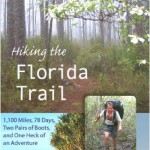
At last, a book-length memoir of a Florida Trail thruhike :
Molloy, Johnny. Hiking the Florida Trail: 1,100 Miles, 78 Days, Two Pairs of Boots, and One Heck of an Adventure. Gainesville, Fla.: University Press of Florida, 2008.
Here are some reviews:
Susan Cocking in the Miami Herald on 2/10/08:
”Johnny Molloy’s new book, ‘Hiking the Florida Trail,’ takes readers on a 78-day, 1,100-mile exploration of a raw and beautiful landscape. Molloy’s sense of wonder and marvel at Florida’s natural treasures reverberates through the pages of his new book, Hiking the Florida Trail (University Press of Florida, $19.95). “So much natural beauty, it’s unbelievable,” Molloy said. “The Florida Trail has vast stretches where you can experience unmatched solitude. It offers a different experience than life in Florida, which is fast-paced. On the Florida Trail, you walk at nature’s pace.”
From the first chapter, titled “Let It Rip!”, the author easily draws readers into his 78-day, 1,100-mile exploration of a … landscape unseen by many living nearby in packed urban centers. Carrying his food and supplies on his back, Molloy, 46, explored the state’s longest continuous hiking path much in the way of early native Americans — cooking over a fire, drinking unfiltered water out of lakes and swamps, and enduring rain, bugs and obstructions wrought by the numerous hurricanes of 2005. His nod to the modern world was to carry a digital recorder and solar-powered mini-computer that enabled him to write the book as he walked.”
Tom Palmer in The Ledger (Lakeland, FL) on 2/12/08:
“Most people view the Florida landscape at high speed through a car windshield or from an airplane window seat. The way to really see Florida or any other part of the planet’s landscape is on foot. I certainly didn’t invent this concept. The late nature writer Edwin Way Teale observed, “For a naturalist, the most productive pace is a snail’s pace.”
Johnny Molloy traveled through Florida at something slightly faster than a snail’s pace, but he didn’t seem to miss too much on a trek through the state that he recounts in a recently published book. In “Hiking the Florida Trail: 1,100 Miles, 78 Days, Two Pairs of Boots and One Heck of an Adventure” (University Press of Florida, Gainesville, 224 pages, $19.95) Molloy takes us along as he slogs through swamps, camps along scenic rivers and gets to see little known natural gems on his way from Big Cypress Swamp to the outskirts of Pensacola.
Molloy, the author of a number of outdoor adventure guides, followed the Florida Trail, a statewide trail system that is still a work in progress – some segments still run along highways – that meanders through a mosaic of public and private lands (the private lands are open only to Florida Trail Association members). This is what is known in hiking parlance as a “through hike,” which means doing the entire route rather than segments that can be handled in a day or two. Molloy makes it clear this is not a hike for the inexperienced or the soft. “When you are going on a long-distance hike, you must extend your discomfort tolerance range,” he wrote. It is a matter of enduring cold and wet weather, uncomfortable sleeping conditions and unexciting food choices. …
But it’s not all hardship. He meets friendly and helpful people. He learns something about Florida’s history and culture. He sees neat stuff. He recounted a stop at a place called Shepherd Spring in the Panhandle, a beautiful blue spring boil that’s only accessible by hiking miles through the wilderness. It was worth the price of admission.
Molloy’s work, which is illustrated with a few black-and-white photos, is a well-written account of a great modern Florida adventure that some us might want to emulate in part if not in whole.He provides enough details to give us a sense of place without getting bogged down in the details of every footstep, side trail or campsite.The book will certainly be a hit within the hiking community, but anyone interested in Florida’s natural history may come away with a tidbit here and there that will be new and probably a lot more satisfying than gagmeal (Molloy’s term for instant oatmeal).”
Mark Davis in the Daytona Beach NewsJournal on 4/13/08:
“Johnny Molloy loves adventure. An avid outdoorsman who loves to hike and canoe, he has written more than 30 guidebooks and narratives about his adventures. His latest involved a Herculean task in 2006 — hiking all 1,100 miles of the Florida Trail consecutively. That’s no misprint; he hiked 78 days from South Florida to the edge of the Panhandle in one fell swoop, camping most of the way.
In “Hiking the Florida Trail: 1,100 Miles, 78 Days, Two Pairs of Boots, and One Heck of an Adventure,” Molloy recounts how he survived the trek that lasted from mid-January to early April two years ago. He battled wildlife (mainly insects), swampy land, storms, hunger, quirky humans and poor directions. Despite up-to-date maps, he got lost numerous times but always found his way back. Why did he choose such an unorthodox excursion? “Because of the freedom and quiet beauty; the rich mix of natural landscapes; the close portrait of hurricane sculpting; the bursting exuberance of spring; and the pleasure of having all you can see entirely to yourself,” he concludes….
“Hiking the Florida Trail” is a must-read for Florida hikers. It’s informative and mildly entertaining for those interested in the outdoors. Because he spends so much time alone, Molloy doesn’t run into very many interesting characters, an element that could’ve enlivened his book. The narrative often becomes a routine exercise of “I got up early, heard the birds sing, made coffee and started hiking through pine scrub forests.” In addition, there were no major disasters along the way — i.e., Chris McCandless in “Into the Wild” (slow death) or Aaron Ralston in “Between a Rock and a Hard Place” (severed arm and almost bleeding to death). Lacking such drama, Molloy’s book won’t pitch a tent on the best-seller charts. But he makes a unique and meaningful contribution to Florida outdoor adventure stories.”
********************************************
March 1, 2008
This book is definitely a winner:
Egbert, Barbara. Zero Days: The Real-Life Adventure of Captain Bligh, Nelly Bly, and Ten-Year-Old Scrambler on the Pacific Crest Trail. Berkeley, Calif.: Wilderness Press, 2008.
It’s an entertaining, informative, and expertly-written account of a family who thruhiked the PCT. Not only is the story of their hike well told, but all aspects of PCT hiking are skillfully interwoven into the tale.
“In April 2004, Barbara Egbert and Gary Chambers began a six-month journey to hike the length of the Pacific Crest Trail with their precocious 10-year-old daughter, Mary. That October, Mary became the youngest person ever to successfully walk the 2,650-mile route from Mexico to Canada.
Zero Days is the tale of a family adventure that required love, perseverance, and the careful rationing of toilet paper. The trio, who adopted the trail names Captain Bligh (Gary), Nellie Bly (Barbara), and Scrambler (Mary), hiked for 168 days and took a total of nine “zero days”—days off from hiking, so-called because the backpacker travels zero mileage on the trail itself that day. In addition to weaving an engaging narrative, Barbara incorporates actual pages and drawing from 10-year-old Mary’s journal.
Along the way, they weathered the heat of the Mojave, the jagged peaks of the Sierra, the rain of Oregon (and paradoxically the lack of water sources there), and the final long, cold stretch of the Northern Cascades to Canada. They met trail angels like the Dinsmores and their salty-mouthed parrot, Topper. And they discovered which family values, from love and equality to thrift and cleanliness, could withstand shin splints, an abscessed tooth, aching legs, failing knees, bad water—and a long, narrow trail and 137 nights together in a 6-by-8-foot tent.
If you have ever endeavored to go the distance on a big thru-hike, you will pick up tidbits of wisdom, practical advice, and humor from this well-told story of one family’s epic journey. Or, if you simply like to read about the adventures of others who walk in the woods, you’ll enjoy the saga of Mary’s—and her parent’s—remarkable journey.
In a genre mostly full of adventure narratives about the hardiest of mountain men, this story of 10-year-old Scrambler and her 50-something parents hiking 2650 miles together inspire readers to dream about and plan their own epic journey.” [Wilderness Press]
About the Author “Barbara Egbert, a.k.a. Nellie Bly, is an experienced hiker, backpacker, and travel writer. An English major (and proud of it!), she has worked in print journalism for more than 30 years. She lives with her husband, Gary Chambers (Captain Bligh), and daughter, Mary (the famous Scrambler), in the San Francisco Bay Area.”[amazon.com]
You can read sample pages at books.google.com by clicking here: http://tinyurl.com/3c6aae
An article about the book, by the author herself, is at: http://newsguild.org/gr/index.php?ID=4892
**********************************
February 1, 2008
The second book to be featured is another personal favorite, written by an excellent author, Jan “Liteshoe” Leitschuch. This one is about a thruhike of Vermont’s Long Trail.
Leitschuh, Jan. The Ordinary Adventurer: Hiking Vermont’s Long Trail: A Primer for Baby Adventurers, and Other Musings on the Nature of the Journey. Titusville, Fla.: Jerelyn Press, 2007.
Jeffrey Hunter, American Hiking Society’s Southeast Trail Programs Director, has written the best review of Jan’s book that I’ve seen so far: “Truth be told I’m not particularly fond of reading most hiker journals. You know the type I’m referring to. “I woke up, cooked breakfast, started hiking at 8 AM, saw a bear at 11 AM, my feet hurt, it’s cold and raining, I have a blister, I’m running low on Snicker bars, I reached camp at 7 PM, I cooked dinner and fell asleep.” That gets old pretty fast. Then there is the rare hiker who has the skill and insight to capture the essence of the hiking experience, and distill that experience into words that makes the reader crave for more. Such is the case with Jan “Liteshoe” Leitschuh. an is well known in long distance hiking circles for her excellent journal from her 2003 Appalachian Trail thru-hike. Her journal remains one of the most popular on Trailjournals.com, and for good reason. She is a gifted and talented writer…” Read the rest of the review >> http://americanhiking.chattablogs.com/archives/065259.html
* * * * * * * * * * * * * * * * * * * * * * * * * * * * * * * * * *
January 1, 2008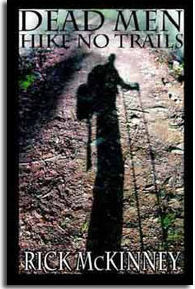
The first book I’ve selected for this new feature is one of the few A. T. memoirs written by a ‘real author,’ and it’s a gem.
McKinney, Rick. Dead Men Hike No Trails. Bangor, Maine: Booklocker.com, 2005.
What readers have said:
“This is probably the most painfully honest writing you’ll ever read. McKinney isn’t a writer that crafts phrases intentionally designed to make you feel or think one way or another. He simply creates a virtual verbal connection between his seriously warped mind (and I mean that in a good way) and his keyboard. You don’t just take a trip with him along the Appalachian Trail, you take a trip through the heights and depths of his soul. It’s as hard to describe the content of the book as it is to categorize it. Equal parts travel journal, private diary and whimsical commentary, this book will thrill you on one page, annoy you on another, amuse you and anger you on still others. Put simply, reading this book is like traveling with McKinney on his 2,000-mile hike: he’ll get on your nerves from time to time, but you’ll have an unforgettable experience.”
“It is a sweet, melodious, painfully naked autobiography of a man haunted by demons; demons which may, or may not, be products of his own decisions in life. In this too fast, skillfully written, nonlinear narrative, the reader is taken on a ride in which we occasionally glimpse into the true complexities, joys, and doubts of the author’s own chaotic perception of himself.”
“Dead Men may be a hard book to categorize but its not hard to like. In fact Mckinney’s honest prose will involve you right from the start, almost as if you are sitting next to him in an AT Shelter, tying up your boot laces with him. This isnt a hiker manual or a self help book. Its more of a theraputic offering from Mckinney, one in which he struggles to find himself among nature and through the wilderness of America. Written with the same honest and open style as his weblog on Jigglebox.com he tells you like it is, from his point of view and from his take on life. Fighting off Depression and the sorrow of a lost friend he pushes no agenda and leaves it up to us the readers to decide how we cope with loss. This is Rick’s way, and it worked wonders for him. If you dont have the instant urge to Hike the AT after reading this work I applaud you for being so secure and content but some of us just have to fly. And fly he does. The friends, lovers and characters he meets along the way are so colorfull one wonders what classic Twain or Dickens book they escaped from. Yet here they are, full of life and most of all real. Dead Men wasnt a perfect journey, and Mckinney doesnt try to be a role model for those battling with their own inner demons. Yet he does what so few writers do. He serves up everything, the good the bad and the ugly and doesnt cheat the reader or preach to them.”
Here’s what the author had to say in his blog, earlier this month: “I gotta tell you, there’s nothing worse than tooting your own horn. I HATE it when people do it to me, and I have never expected any agent or publisher or ANYONE to listen to my own promotion of my work. To my mind, the best recommendations are those that come from other people, two or three steps removed from the source. Having said that, can I throw a little Christmas request out there into the Universe? I don’t want presents. I don’t need anything tangible. But for all of you who read Dead Men but never went online to review it on Amazon, how about it, eh? Even if you hated the dang book, write that! Write anything. Just review it. And don’t read the other reviews first. You’ll taint your own view. Write how it made you feel, what it did for you, where it took you, etc. I know it’s sold some 2000 copies, so it totally mystifies me as to why there are only 17 reviews on Amazon. Hell, as you’ll see below, I just wrote four “reviews” myself. Be my good little elves. Be my Santa Clauses and Rudolphs! Click this paragraph to be taken straight there and just write something. Your opinion matters! Thank you.”
So I thought I’d give his terrific book a little publicity. It deserves it. Go read the darn thing!

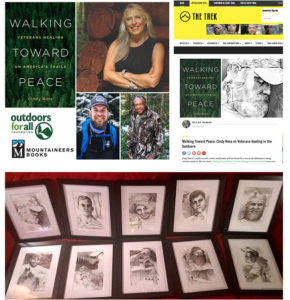
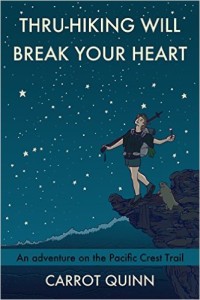
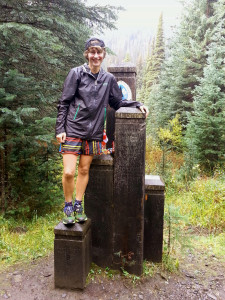
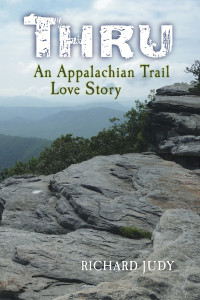
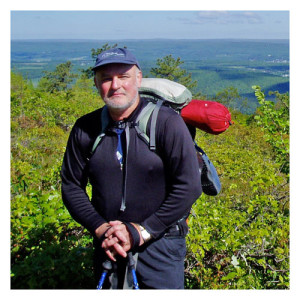

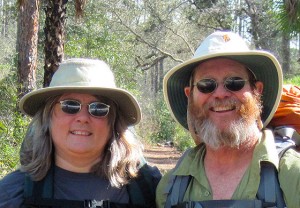
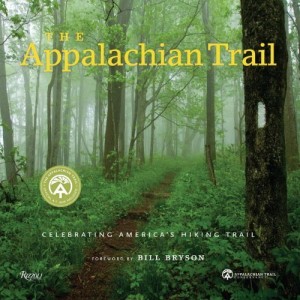



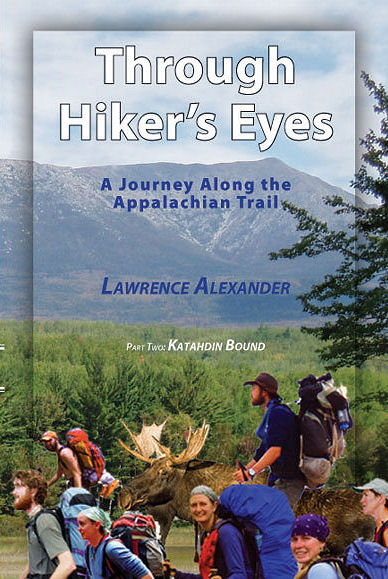
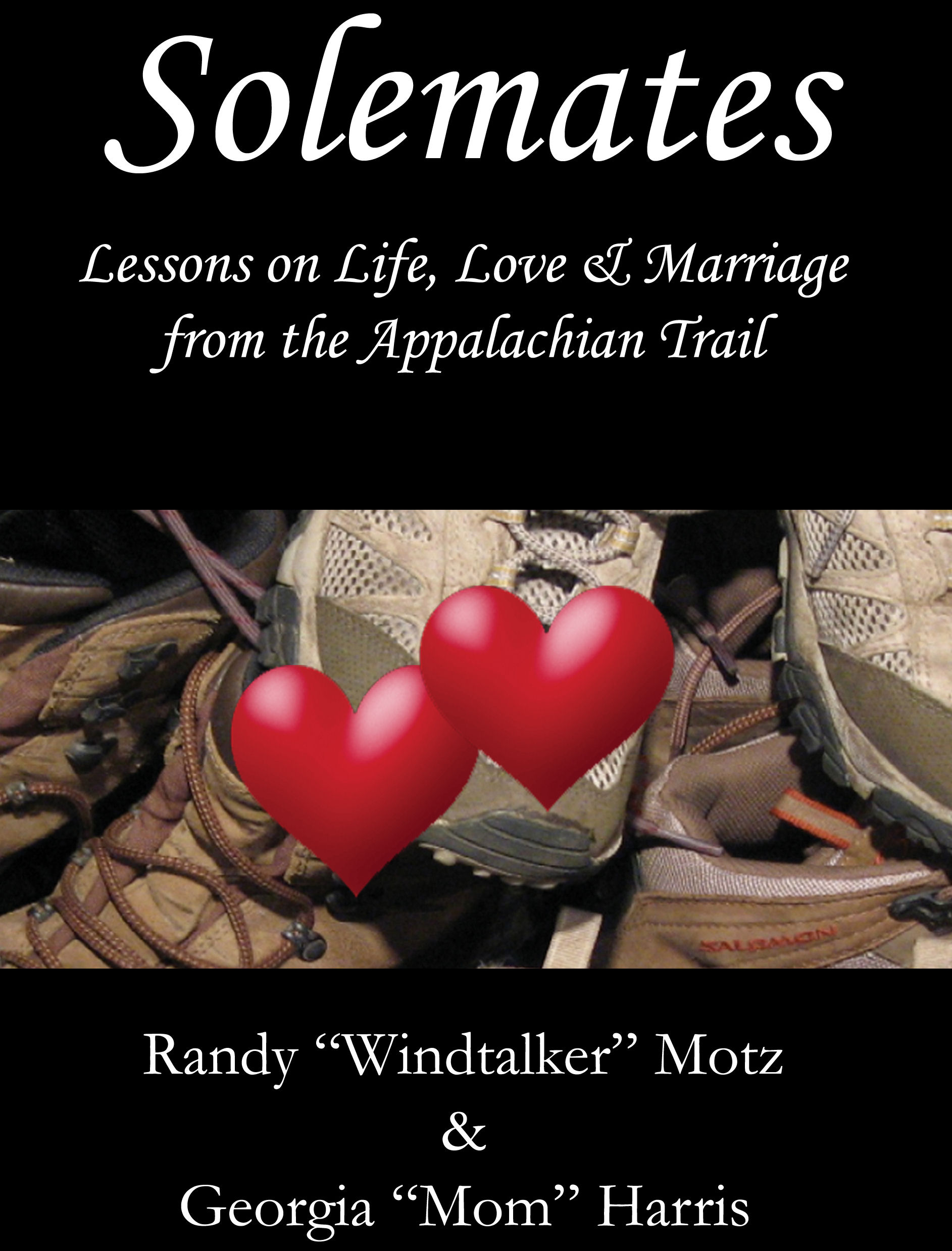
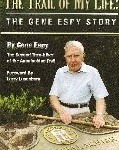

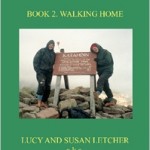
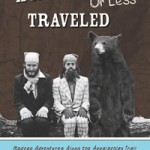
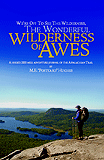

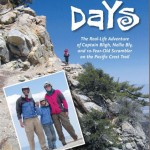
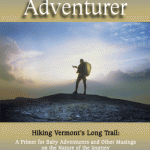

13 Responses to FEATURED BOOK